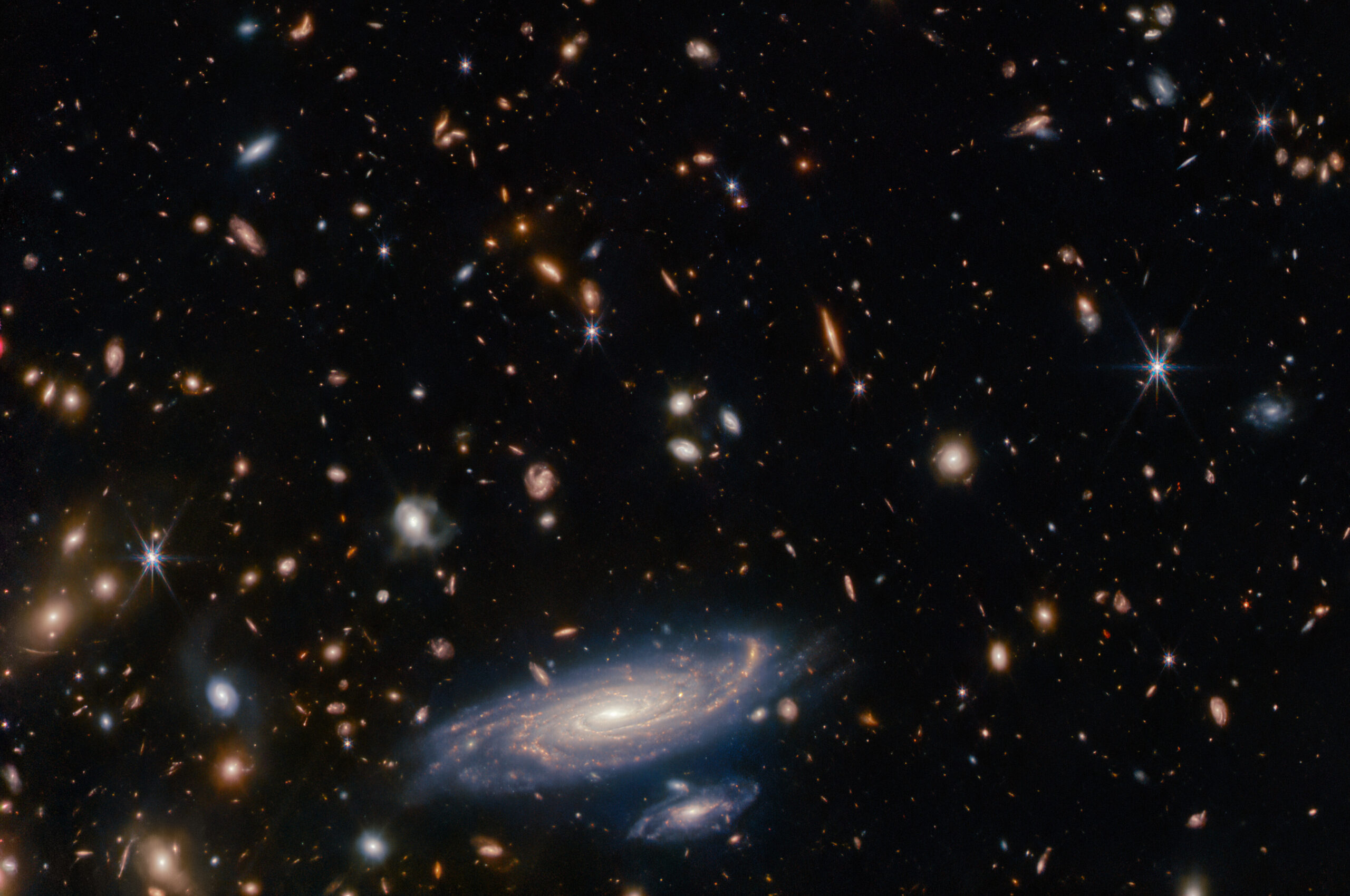Apart from inconceivable amounts of dark energy and dark matter, the rest of our universe—only around 4 %—is filled with normal matter, so called baryons. Surprisingly, only a small fraction of that normal matter can be observed through starlight emitted by galaxies.
We are now more than a full year into the era of JWST, NASA’s flagship observatory and successor to the Hubble Space Telescope. Exoplanet characterization has historically been dominated by space-based facilities, and the new infrared capabilities of JWST are uncovering the atmospheres of exoplanets in an unprecedented way. The chemical signatures of planets are being actively probed and detected, with an array of new chemical species now detectable including oxygen, carbon and nitrogen-bering molecules. This opens up spectral constrains to the rich atmospheric chemistry ongoing in a wide range of planetary types, temperatures, and metallicities. In this talk, the speaker will discuss some of the outstanding questions in the exoplanet field and how the atmospheric chemistry can help address these questions. He will also present new transit and phase curve results from ongoing JWST programs, including a Neptune and Jupiter mass planet discussing the implications of the chemistry and atmospheric physics of these planets.
The standard cosmological model states that massive galaxies contain a large fraction of dark matter. Dark matter is a transparent substance that does not interact through regular baryonic matter and is only detected through its gravitational pull over the stars and the gas.
Computer simulations of the universe have been in common use since the 1980s, and are now a vital tool in helping us interpret data from increasingly powerful telescopes. Amongst other things, simulations have helped establish the case for dark matter and dark energy, and have been key to creating a broad consensus around the idea that galaxies start small and grow over time through merging. The speaker reviews in outline how these simulations work, and highlight that a key difficulty in understanding their results is to untangle cause and effect. For example, the observed diversity of different galaxy sizes, shapes and colours can be reproduced in a statistical sense, but there is still considerable uncertainty around which causal processes give rise to this diversity. The speaker explains how exerting careful experimentation with the initial conditions for our simulations, which represent conditions shortly after the ‘big bang’, we can start to address these uncertainties. We call this technique ‘genetic modification’, since it loosely corresponds to controlling the genes of our virtual galaxies, to see how the galaxies mature and develop in response. This in turn helps to build a more complete physical picture of how galaxies mature over time, with carefully quantified uncertainties. The speaker discusses how such efforts are vital to making sense of new observations from cutting-edge and future facilities like Gaia, JWST, ELT, SKA and LISA.
Studies have shown that stars contain very little baryonic matter and that the majority of the baryons in the universe likely exist in gaseous form. Cool baryons are more easily observed, but what have been seen cannot account for the expected number of baryons produced in the early universe. The lack of understanding of the origin and distribution of “missing baryons” is impeding the progress in completing the picture of baryon cycling in galaxy ecosystems. The bulk of the “missing baryons” may be exist in the form of hot, extended halos around galaxies and/or filamentary structures in the cosmic web; recent observations seem to support such scenarios. However, due to the lack of a sensitive probe, the physical and chemical properties of such hot baryons are poorly measured with existing facilities, but carry critical information on the feedback processes that are deemed critical to galaxy evolution. Theory is far ahead of observation in this area; data are severely lacking. The speaker describes the missing baryon puzzle and provide a personal perspective on how to solve it.
